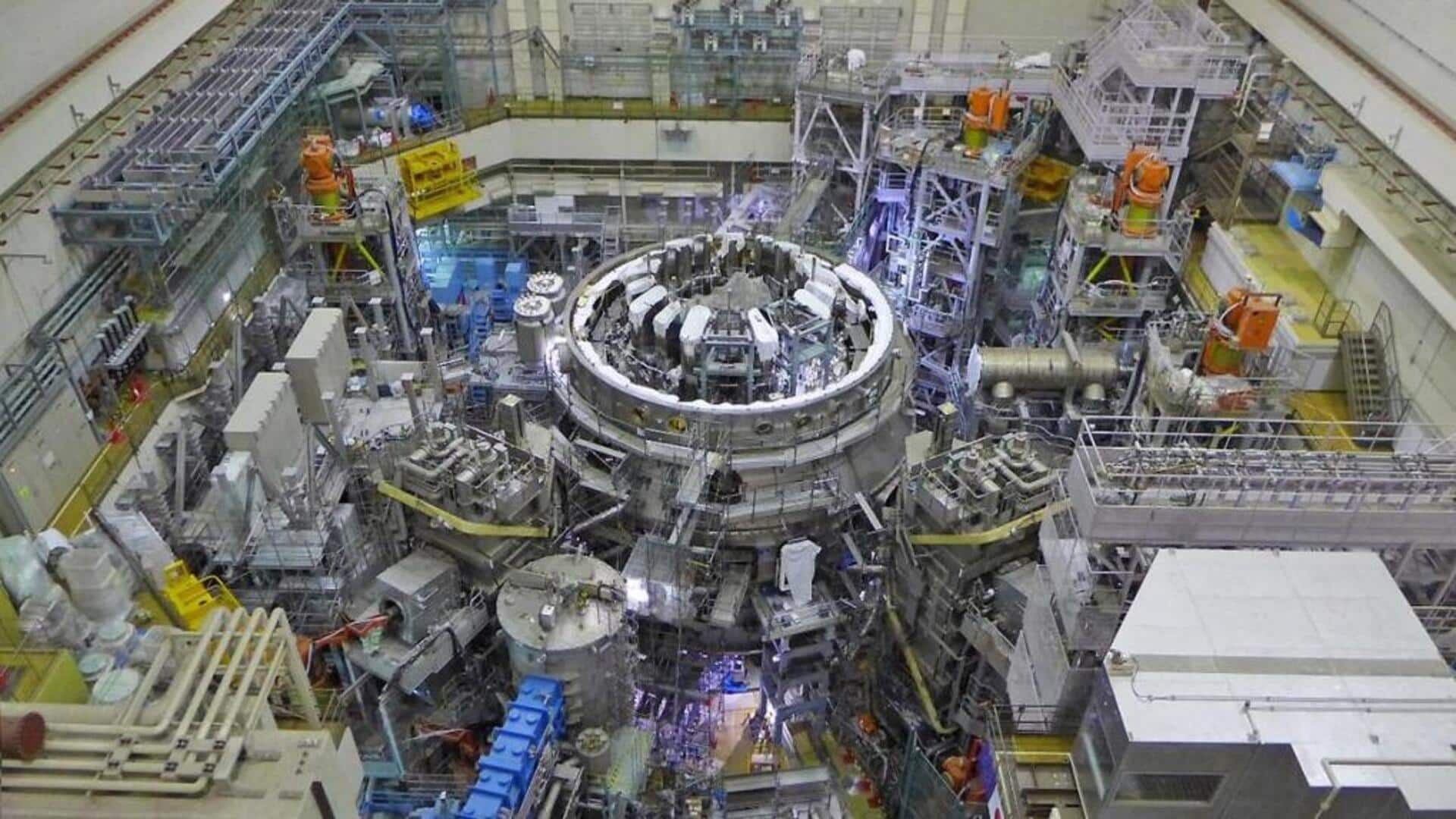
Top 5 facts about world's largest nuclear fusion reactor
What's the story
The world's largest experimental nuclear fusion reactor, called JT-60SA, has officially begun operations in Japan. The reactor operates on nuclear fusion, the same process that powers the Sun. Nuclear fusion is different from fission. It involves fusing two atomic nuclei instead of splitting one. JT-60SA is a collaboration between the European Union and Japan. The project aims to explore the potential of fusion as a safe, abundant, and carbon-free energy source, where the energy generated is greater than the input.
Precursor
JT-60SA can hold plasma heated to 200 million degrees Celsius
The six-floor-high JT-60SA reactor features a doughnut-shaped "tokamak" vessel designed to hold plasma heated to 200 million degrees Celsius. It serves as a precursor to the International Thermonuclear Experimental Reactor (ITER), currently under construction in France. Both projects aim to achieve nuclear fusion by causing hydrogen nuclei to merge into helium, releasing energy in the form of light and heat, similar to the Sun. Researchers at ITER hope to attain the ultimate goal of nuclear fusion technology: net energy.
Characteristics
No greenhouse emissions
Generating fusion energy does not produce carbon dioxide emissions, making it important on the path to net zero emissions. Fusion reactions are also "intrinsically safe" as they stop when the fuel supply or power source is shut down. As a result, fusion reactions serve as "one of the next-generation energy sources" that can simultaneously "address energy supply and environmental challenges."
Trivia
Small amounts of nuclear fuel can generate plenty of energy
SA in JT-60SA stands for "super, advanced" since the experiment will involve superconducting coils and study advanced modes of plasma operation. The fuels required for fusion reactions are widely available. Per the official blog, there are "enough supplies to last millions of years." To put things into perspective, 60kg of fusion fuel can provide the same amount of energy as 250,000 tonnes of oil. Fusion plants can also complement the power supply from renewables by providing "baseload" electricity when needed.
Details
Fusion reactions do not generate long-lasting radioactive waste
Unlike fission reactions, fusion doesn't pose a risk of catastrophic nuclear accidents, like the Fukushima incident in 2011. Nuclear fusion reactions generate significantly less radioactive waste than current power plants. EU energy commissioner Kadri Simson referred to the JT-60SA as "the most advanced tokamak in the world," adding that its launch marks "a milestone for fusion history." "Fusion has the potential to become a key component for energy mix in the second half of this century," Simson added.
Development
The reactor took over a decade to complete
JT-60SA is the result of collaboration between over 500 scientists, engineers, and more than 70 companies from Europe and Japan. The device development began in 2007 and was completed in 2020 with the end of assembly. Since then, several technical improvements have been performed. The overall cost of the project for the phase of construction is estimated to be €560 million.